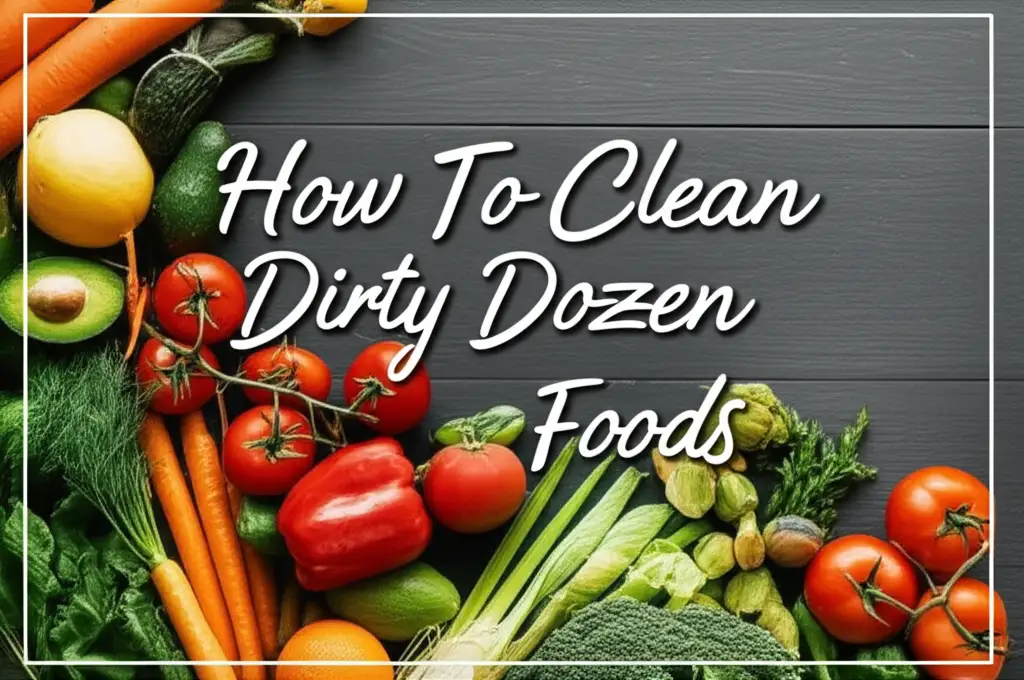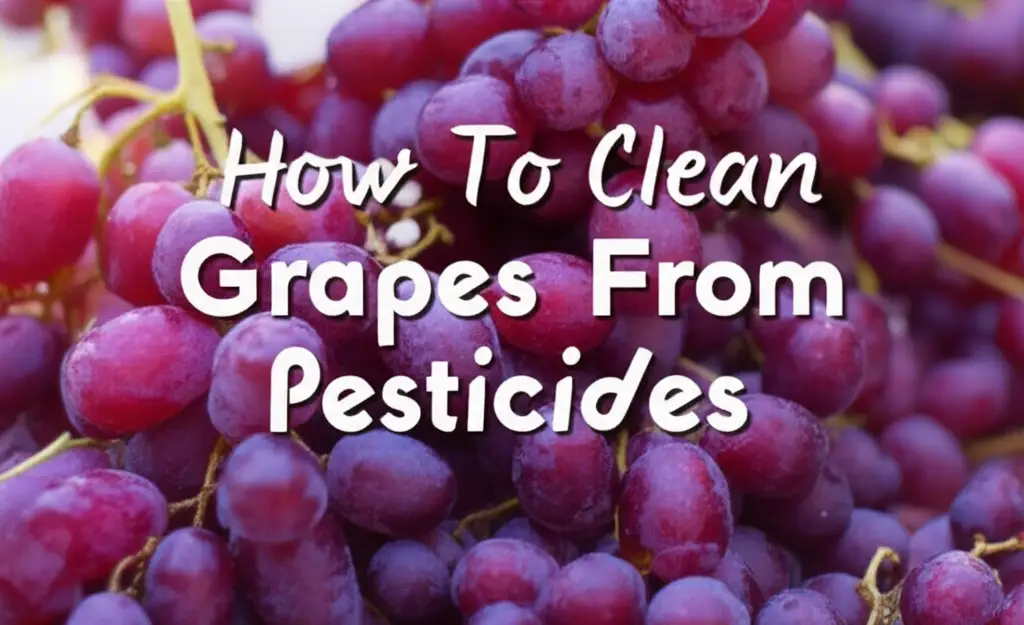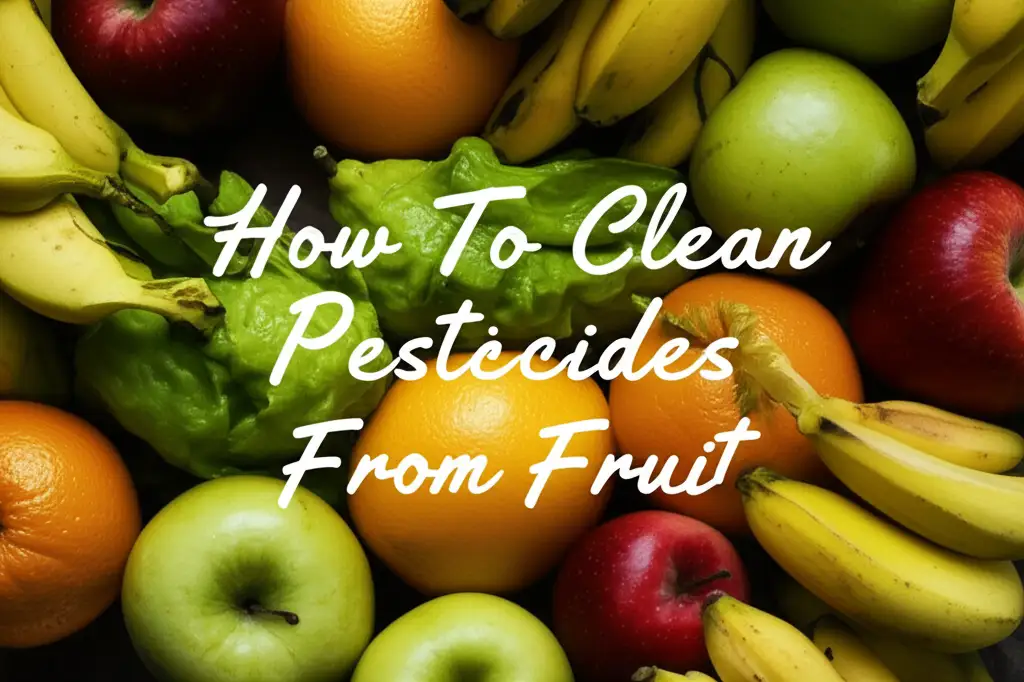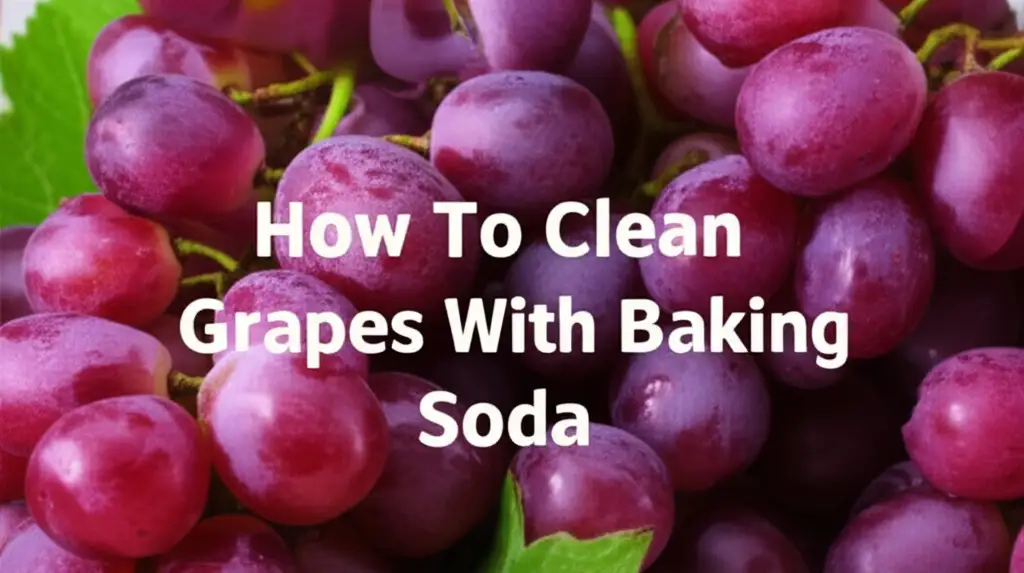· Food Safety · 12 min read
How To Clean Dirty Dozen Foods

Cleaning Dirty Dozen Foods: Your Essential Guide
Imagine biting into a crisp apple or enjoying fresh strawberries. You want to feel good about what you eat. However, some fruits and vegetables carry more pesticide residues than others. These are often called the “Dirty Dozen” foods. Knowing how to clean Dirty Dozen foods properly gives you peace of mind.
This article will help you understand these specific foods. I will show you effective methods to wash them. We will explore simple steps to reduce harmful residues. You will learn about basic rinses and deeper cleaning soaks. I aim to make your produce safer for your family.
Takeaway
- Identify the Dirty Dozen: Recognize fruits and vegetables high in pesticide residue.
- Prioritize Washing: Always wash produce, even organic items, before consumption.
- Utilize Simple Solutions: Use baking soda or vinegar solutions for deeper cleaning.
- Master Specific Techniques: Apply tailored washing methods for different produce types.
- Ensure Proper Drying & Storage: Dry produce well to prevent spoilage and store correctly.
- Consider Beyond Cleaning: Explore organic options and varied diets to further reduce exposure.
You can effectively clean Dirty Dozen foods by rinsing them thoroughly under cold running water. For a deeper clean, soak produce in a baking soda solution (1 teaspoon baking soda per 2 cups water) for 12-15 minutes, or a diluted vinegar solution (1 part vinegar to 3 parts water) for 5-10 minutes. Always rinse well after soaking and dry completely.
Understanding the Dirty Dozen: Why Cleaning Matters
The Environmental Working Group (EWG) releases a list each year. They call it the “Dirty Dozen.” This list identifies common fruits and vegetables with the highest pesticide residues. These foods consistently test positive for multiple pesticides. They also show higher concentrations of pesticides compared to other produce.
We buy these foods often. Strawberries, spinach, and kale are frequently on the list. Apples, nectarines, and grapes also appear regularly. This does not mean these foods are bad for you. It means they need extra attention before you eat them.
Cleaning these foods reduces your exposure to unwanted chemicals. It is a simple step to improve your family’s health. Washing helps remove dirt, bacteria, and surface pesticide residues. This practice makes your healthy choices even healthier.
Basic Washing Techniques for All Produce
Washing all produce is a fundamental food safety step. It helps remove visible dirt, bacteria, and some surface residues. You should always wash fruits and vegetables before you eat them. Do this even if you plan to peel them. The peeling process can transfer contaminants from the skin to the edible part.
Use cold running water for most produce. Gently rub items with your hands. For firmer fruits and vegetables, you can use a clean produce brush. This helps dislodge dirt and waxy coatings. Do not use soap, detergent, or bleach on produce. These products are not safe for consumption and can leave harmful residues.
Wash produce right before you are ready to eat or cook it. Washing too far in advance can encourage bacterial growth. This also makes some produce spoil faster. After washing, dry your produce thoroughly. Excess moisture can promote mold and bacteria.
Deep Cleaning Dirty Dozen Foods: DIY Solutions
While a simple water rinse is good, Dirty Dozen foods often benefit from deeper cleaning. This helps address more stubborn residues. You can easily create effective cleaning solutions at home. These solutions use common kitchen ingredients. They are safe and gentle for your food.
These DIY methods go beyond surface dirt. They can help break down certain pesticide compounds. They also remove wax and other coatings. I have found these methods incredibly helpful for peace of mind. They provide an extra layer of protection for my family.
The Baking Soda Soak Method
The baking soda soak is a popular and effective method. Research shows baking soda can significantly reduce pesticide residues. This method is simple to use. It works well for most Dirty Dozen items.
To prepare the soak, fill a large bowl with water. Add one teaspoon of baking soda for every two cups of water. Stir the water until the baking soda dissolves. Submerge your fruits and vegetables completely in this solution. Let them soak for 12 to 15 minutes. After soaking, rinse the produce thoroughly under cold running water. This removes any baking soda residue.
The Vinegar Wash Approach
Vinegar is another excellent natural cleaner. It is known for its ability to cut through grime and kill bacteria. People often use vinegar for various household cleaning tasks. For example, it is great for how to clean mold with vinegar or even how to clean glass with vinegar. Its cleaning power extends to produce, too. A diluted vinegar solution can help remove bacteria and some pesticide residues from your produce.
Mix one part white vinegar with three parts water in a bowl. For example, use one cup of vinegar for three cups of water. Place your Dirty Dozen foods into this solution. Allow them to soak for 5 to 10 minutes. For leafy greens, a quick dip and swish might be enough. Do not soak delicate items for too long. They might absorb a vinegar taste. After soaking, rinse all produce well under cold running water. Ensure no vinegar smell or taste remains. This method is especially useful for berries and leafy greens.
Commercial Produce Washes: Are They Worth It?
Many commercial produce washes are available in stores. They claim to remove more pesticides and waxes than water alone. These products are often made from natural ingredients. They can include citrus extracts or vegetable oils. Some people find them convenient.
However, studies show that simple baking soda or vinegar solutions are often just as effective. They are also much more economical. You likely already have the ingredients in your pantry. If you choose to use a commercial wash, always follow the package directions carefully. Make sure you rinse your produce thoroughly afterward. I personally prefer the DIY methods. They give me control over the ingredients used.
Specific Cleaning Tips for Common Dirty Dozen Items
Different types of produce require slightly different washing approaches. Their textures and shapes affect how dirt and residues cling. Knowing these specific tips helps you clean each item most effectively. This ensures the best results for your efforts. I pay close attention to these details for a thorough clean.
Leafy Greens (Spinach, Kale, Collard Greens)
Leafy greens like spinach, kale, and collard greens can hide a lot of dirt. They often have tiny crevices where residues can settle. It is important to wash them thoroughly. I always break off the leaves from the stem first. This makes washing easier and more effective.
Fill a large bowl or a clean sink with cold water. Place the separated leaves into the water. Swish them around gently. You might see dirt sink to the bottom. Drain the water and repeat this process two or three times. This is often called a triple wash. For very dirty greens, you can add a splash of vinegar to one of the washes. After washing, use a salad spinner to remove excess water. Alternatively, pat them dry with a clean paper towel.
Berries (Strawberries, Blueberries, Raspberries)
Berries are delicate and porous. They are notorious for being high on the Dirty Dozen list. Washing them requires a gentle touch. You do not want to bruise them. Bruised berries spoil quickly.
Do not wash berries until you are ready to eat them. Washing them too early makes them absorb water and get mushy. For strawberries, blueberries, and raspberries, place them in a colander. Rinse them gently under cool running water. Avoid a strong stream that might damage them. For a deeper clean, briefly dip them in a diluted vinegar solution (1 part vinegar to 3 parts water). Do not soak berries for more than a few minutes. This prevents them from becoming waterlogged. After rinsing, spread them in a single layer on paper towels. Let them air dry completely.
Tree Fruits (Apples, Pears, Peaches, Nectarines)
Apples, pears, peaches, and nectarines often have firm skins. They can also have a waxy coating. This coating might trap residues. These fruits are typically high on the Dirty Dozen list. You need to clean them well before eating.
For apples and pears, use a clean produce brush. Gently scrub the skin under cold running water. This helps remove any wax or surface residues. For peaches and nectarines, which have fuzz or softer skins, scrubbing might be too harsh. Instead, rub them gently with your hands under running water. A baking soda soak also works well for these fruits. After washing, dry them with a clean cloth or paper towel. Pay attention to the stem and blossom ends where dirt can accumulate.
Grapes and Cherries
Grapes and cherries often come in clusters. This makes them tricky to clean thoroughly. Pesticides can hide between the individual fruits. Always wash them just before you plan to eat them. Washing them too early can make them spoil faster.
Place the entire bunch of grapes or cherries in a colander. Rinse them under cool running water. Gently separate the individual fruits from the stems as you rinse. This ensures water reaches all surfaces. For a more thorough clean, you can briefly soak them. Use a baking soda solution or a diluted vinegar solution. Soak for about 5 minutes. After soaking, rinse them very well under running water. Spread them on a clean towel to air dry. Ensure they are completely dry before storing or eating.
Drying and Storing Clean Produce Safely
Proper drying is as important as washing. Excess moisture can encourage bacterial growth. It also makes your produce spoil faster. You want your fruits and vegetables to last longer. Effective drying helps extend their shelf life. I always make sure my produce is completely dry before storage.
There are several ways to dry your produce. A salad spinner is excellent for leafy greens. It quickly removes a lot of water. For berries and other delicate items, spread them in a single layer on clean paper towels. Let them air dry for a while. You can also gently pat them dry with a clean cloth. Once dry, store your produce properly. Refrigerate most cleaned fruits and vegetables. Use airtight containers or reusable produce bags. Keep them separate from raw meats to prevent cross-contamination.
Try to wash produce right before you plan to use it. This keeps it freshest. If you wash produce for later use, ensure it is completely dry. Then store it in the crisper drawer of your refrigerator. Some items, like berries, might still prefer being washed just before eating. This helps them stay firm and fresh.
Beyond Cleaning: Reducing Pesticide Exposure
Cleaning Dirty Dozen foods is an important step. However, you can do more to reduce pesticide exposure. These additional strategies offer broader protection. They complement your cleaning efforts. I consider these practices for a healthier lifestyle.
Buying organic produce is one option. Organic farming practices avoid most synthetic pesticides. When it comes to the Dirty Dozen, buying organic versions is often recommended. This is because these specific foods are known to absorb more pesticides from conventional farming. For foods on the “Clean Fifteen” list, conventional options are generally fine.
Peeling certain fruits and vegetables can also reduce exposure. However, remember that many nutrients are in the skin. So, peeling is a trade-off. For example, if you are very concerned about apples, peeling them might help. But you lose beneficial fiber and vitamins. I generally prefer to wash thoroughly instead of peeling.
Varying your diet helps too. Do not eat the same foods every day. Eating a wide range of fruits and vegetables naturally diversifies your nutrient intake. It also prevents you from getting a high concentration of any one pesticide. Support local farmers when possible. Many local farms use fewer pesticides, even if they are not certified organic. Ask them about their growing practices.
Growing your own produce gives you ultimate control. You decide what goes into your garden. This ensures your food is truly clean. Even a small herb garden can make a difference. This approach gives me great satisfaction. It connects me more directly to my food.
FAQ Section
Q1: Do I need to wash organic produce?
Yes, you should always wash organic produce. While organic farms avoid most synthetic pesticides, produce can still have natural contaminants. This includes dirt, insects, and bacteria from the soil or handling. A good rinse under cold water is sufficient for most organic items.
Q2: Can I use dish soap to wash produce?
No, you should never use dish soap or any other detergent to wash produce. Dish soaps are not meant for consumption. They can leave harmful chemical residues on your food. Stick to water, baking soda, or vinegar solutions. These are safe and effective.
Q3: How long should I soak produce in baking soda/vinegar?
For a baking soda soak, aim for 12-15 minutes. For a vinegar wash, a soak of 5-10 minutes is usually enough. Delicate items like berries or leafy greens should have shorter soak times. Always rinse thoroughly with cold water after soaking to remove any residue.
Q4: Should I wash produce immediately after buying it?
It is generally best to wash produce just before you are ready to eat or cook it. Washing too early can introduce moisture, which speeds up spoilage and encourages bacterial growth. If you do wash ahead of time, ensure the produce is completely dry before storing it.
Q5: What is the Clean Fifteen?
The Clean Fifteen is another list from the EWG. It identifies fruits and vegetables with the lowest pesticide residues. These foods are generally safer to buy conventionally. Avocados, sweet corn, pineapples, and onions are often on this list.
Q6: Does washing remove all pesticides?
Washing produce significantly reduces surface pesticide residues. It does not remove all pesticides, especially those absorbed systemically into the plant. However, proper washing greatly lowers your overall exposure. This makes a positive impact on your health.
Conclusion
Taking control of what goes into your body is powerful. Learning how to clean Dirty Dozen foods is a key part of this. We have explored simple yet effective methods. From basic rinses to baking soda and vinegar soaks, you now have the tools. These techniques help minimize your exposure to unwanted pesticide residues.
I feel confident eating my fruits and vegetables after giving them a proper clean. You can achieve this same peace of mind. Remember the specific tips for different produce types. Pay attention to drying and storage. These steps ensure your food is not only clean but also stays fresh. Incorporate these practices into your daily routine. Enjoy safer, healthier meals every day. Start cleaning your Dirty Dozen foods better today!
- Dirty Dozen
- pesticide removal
- food washing
- produce cleaning
- safe eating
- organic food
- vinegar wash




